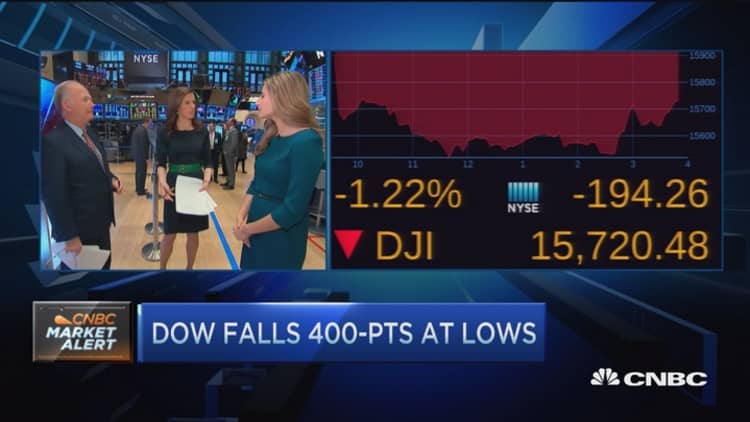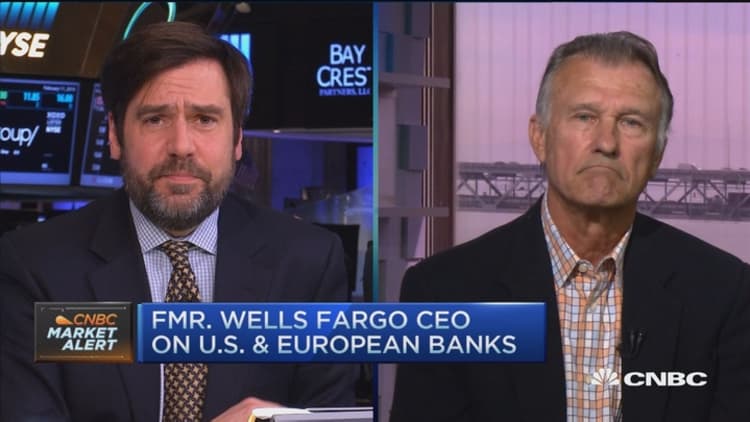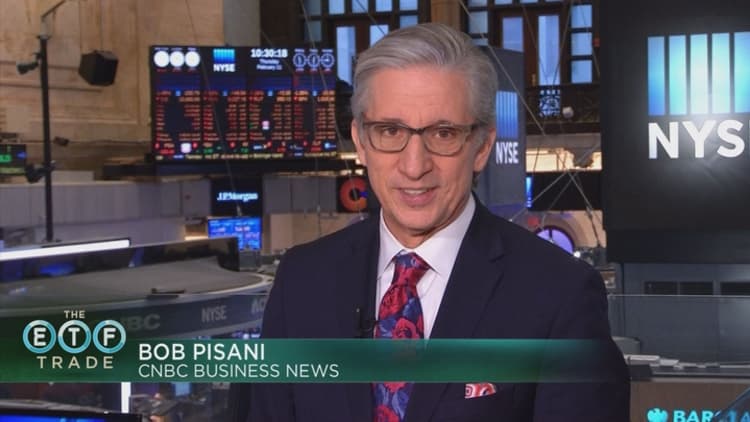


(The following article is a CNBC Pro free preview. Click here to subscribe).
Stocks are falling on concerns over European banks, the plunging price of oil and the first-ever negative Japan 10-year bond yield this week. How can traders play the global march to negative yields and the rising volatility?
Federal Reserve Chair Janet Yellen attempted to reassure the market as she reported to the Senate Banking Committee on Thursday, a day after a session with the House Financial Services Committee. In her speech Wednesday, she stated the Fed is closely watching the global financial market turmoil and said it could delay the future path of rate hikes if it hurts the economy.
However, investors are worrying that loose central bank policies have finally gone too far as bond yields are reaching unprecedented levels.
Japan on Tuesday became the first G-7 country whose 10-year debt went past zero, which means holders are actually paying the government for the privilege of lending it money. And the U.S. 10-year Treasury yield is falling precipitously, declining to 1.53 percent Thursday morning, the lowest level since August 2012.
CNBC Pro asked top Wall Street strategists and money managers how investors should position their portfolios in the global march to negative bond yields.
For shorter maturities, this trend of negative yielding debt has been around for a while. Societe Generale estimates that global negative yielding debt of all durations has increased to $7 trillion from $2.6 trillion a year ago.
Read More Attention Investors: Don't behave like traders
"(Central banker) plan worked for a while, but it has now failed. Investors are hoarding capital and taking a defensive stance. Negative rates have weakened the European and Japanese banking system," BKCM's Brian Kelly wrote in an email earlier this week. "What should investors do? Exercise extreme caution until markets digest the loss of confidence in central bankers."
And others agreed this is a bad signal for most assets.
"Negative rates are a sham. Pricing and policies are manufactured in a vacuum," Old Blackheath's Jeremy Hill said in an email. "For global risk assets this likely means that gains made in the now will be repaid via higher volatility in the future. That keeps money at bay and complicates all risk management models."
All isn't lost however, as investors do believe there are opportunities to make money in this uncertain environment.
"It's hard to find decent risk-to-reward propositions right now, but for the credit inclined, select (corporate) investment-grade bonds look attractive and for equity investors self-help or meditation books are easy enough to source," Hill added.
Japan 10-year bond yield versus gold
Source: Societe Generale, Bloomberg
Gold is already up more than 15 percent year to date. Some strategists believe the rally in bullion is just getting started as investors look for safe havens other than government bonds, which now yield the same as gold ... nothing.
Societe Generale's Lawrence McDonald told CNBC Pro on Monday that the jump in negative-yielding debt is a "fresh wind in gold's sails" and will cause a "serious demand surge" for the precious metal.
Historical statistics also support buying gold in times of rising market volatility.
The CBOE Volatility Index, or VIX, is a key measure of market expectations of near-term volatility conveyed by stock index option prices. Using hedge fund analytics tool Kensho, we screened for what ETFs would do well if the VIX continues to rise to August 2015 market turmoil levels.
There are 35 instances of the VIX climbing 30 percent or more in one month during the last decade, according to Kensho.
Gold-related ETFs such as the SPDR Gold Trust and iShares Gold Trust outperform as they are often used as a safe haven by investors. Consumer staples and utilities do hold value, but they can't totally escape the market volatility as both sectors trade down moderately.
Investors traditionally flock to the safety of U.S. government securities in times of market stress. The iShares 20+ Year Treasury Bond ETF provides exposure to the Treasury debt market and is the top performer.
Read MoreIs this the year gold stops breaking hearts?
Disclosure: NBCUniversal, parent of CNBC, is a minority investor in Kensho.


